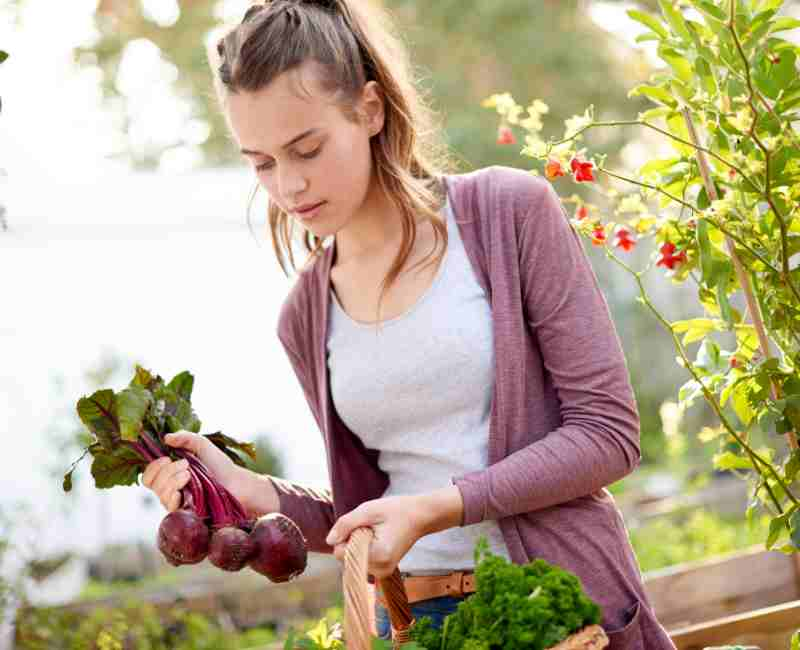Imagine a world where your front yard is not just a patch of green grass but a vibrant and productive garden that provides you with fresh, delicious food. This is the world of edible landscaping, a practice that is gaining popularity as people look for ways to connect with nature, eat healthier, and increase their self-sufficiency.
Edible landscaping is the art of integrating edible plants into your landscape design. This can include anything from planting a few herbs in a window box to creating a full-fledged vegetable garden in your front yard. The possibilities are endless, and the benefits are numerous.

Benefits of Edible Landscaping
- Fresh, healthy food: Growing your own food is a great way to ensure that you are eating fresh, healthy produce that is free of pesticides and herbicides.
- Increased property value: Studies have shown that homes with edible landscapes can sell for more money than homes with traditional lawns.
- Reduced water usage: Edible plants typically require less water than lawns, which can help you conserve water and save money on your water bill.
- Increased biodiversity: Edible landscapes attract pollinators such as bees and butterflies, which are essential for the health of our ecosystem.
- A sense of community: Growing your own food can be a great way to connect with your neighbors and community.
Getting Started with Edible Landscaping
If you are interested in getting started with edible landscaping, there are a few things you need to consider.
- Your climate: Some plants are better suited to certain climates than others. Do some research to find out which plants will thrive in your area.
- Your sunlight: Most edible plants need at least 6 hours of sunlight per day. Choose plants that will get the right amount of sun in your yard.
- Your soil: The quality of your soil will have a big impact on the success of your garden. Amend your soil as needed to ensure that it is fertile and well-draining.
- Your water: Make sure you have a reliable source of water for your garden. You may need to install a watering system or use a rain barrel.
- Your time: Be realistic about how much time you have to care for your garden. Start small and gradually add more plants as you become more comfortable with edible landscaping.
Once you have considered these factors, you can start planning your edible landscape. Here are a few tips:
- Start small. Don’t try to do too much too soon. Start with a few plants and add more as you gain experience.
- Mix edibles and ornamentals: You can create a beautiful and productive garden by mixing edible plants with ornamental flowers and shrubs.
- Use containers: If you don’t have a lot of space, you can grow edible plants in containers. This is a great option for patios, balconies, and decks.
- Get creative: There are endless possibilities when it comes to edible landscaping. Don’t be afraid to experiment and find what works best for you.
Edible Landscaping Ideas
Here are a few ideas to get you started:
- Plant an herb garden. Herbs are easy to grow and can be used to add flavor to a variety of dishes.
- Grow a salad garden: lettuce, spinach, and other salad greens are easy to grow and provide a quick and healthy meal.
- Plant a salsa garden. Tomatoes, peppers, onions, and cilantro are all essential ingredients for making salsa.
- Grow a pizza garden: tomatoes, basil, oregano, and garlic are all essential ingredients for making pizza.
- Plant a fruit tree. Fruit trees can provide you with fresh fruit for years to come.
- Grow a berry patch: Berries are a delicious and nutritious treat that can be eaten fresh, frozen, or made into jam.
With a little planning and effort, you can create a beautiful and productive edible landscape that will provide you with fresh, healthy food for years to come.
Additional Tips
- Start with seeds or seedlings. This is the most affordable way to get started.
- Use organic methods. This will help you produce healthy food that is free of pesticides and herbicides.
- Compost your kitchen scraps. This will help you improve the quality of your soil.
- Mulch your plants. This will help retain moisture and suppress weeds.
